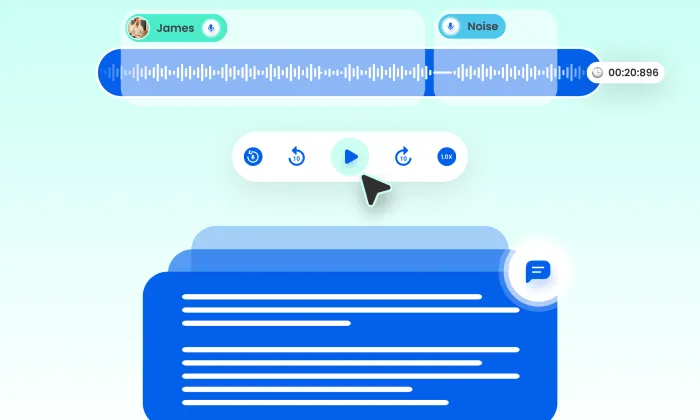How are inbound and outbound calls represented in the doctor–patient conversation dataset?
Call Analysis
Healthcare
Conversation Dataset
Understanding the representation of inbound and outbound calls in the Doctor Patient Conversation Speech Dataset is crucial for developing effective AI systems in healthcare. This dataset captures realistic clinical interactions and is vital for training AI models in natural language processing (NLP) and conversational AI.
Defining Inbound and Outbound Calls
- Inbound Calls: Inbound calls are initiated by the patient, often reflecting scenarios such as initial consultations, follow-up inquiries or symptom discussions. These calls dominate the dataset, accurately mirroring real-world healthcare dynamics where patients usually seek guidance from healthcare providers.
- Outbound Calls: Outbound calls, on the other hand, are initiated by healthcare professionals. They may involve follow-ups after treatment, check-ins post-diagnosis or discussions regarding test results. While these calls are less frequent in the dataset than inbound calls, they are essential for a comprehensive understanding of doctor-patient communication.
Significance of Call Representation in AI Training
The inclusion of both inbound and outbound calls offers several benefits:
- Realistic Interaction Patterns: Capturing both types of interactions provides a holistic view of doctor-patient dynamics, crucial for developing AI models that can simulate or analyze these conversations effectively.
- AI Model Generalization: Balanced datasets with diverse interaction types enable AI systems to generalize better across varied contexts, improving their ability to understand different conversational roles and scenarios.
- Clinical Relevance: Understanding the nuances of patient-initiated and doctor-initiated interactions helps in creating conversational agents that can respond appropriately and empathetically in healthcare settings.
Dataset Recording and Annotations
The dataset's structure ensures that conversations capture the natural flow of communication, including overlaps, interruptions, and emotional cues. Here’s how it’s done:
- Data Collection Methodology: Conversations are recorded in both telephonic and in-person settings using the Yugo platform. Remote calls are in stereo for clear speaker distinction, while in-person sessions are in mono for clarity.
- Realistic Scenarios: Each dialogue is crafted to simulate authentic clinical interactions under the guidance of licensed medical professionals, ensuring both inbound and outbound scenarios are ethically represented.
Key Challenges in Call Representation
Representing inbound and outbound calls involves certain challenges:
- Speaker Diversity: The dataset includes a variety of doctors and patients across multiple languages and demographics, enriching the conversational context and supporting robust AI model development.
- Annotation Quality: Each interaction is meticulously annotated, capturing speaker roles, emotional tones, and medical contexts to ensure AI systems learn the subtleties of each interaction type.
Common Missteps in Understanding Call Dynamics
AI development teams may overlook the importance of context in these interactions, assuming uniform patterns. However, recognizing that inbound calls often reflect patient urgency while outbound calls may have a more authoritative tone is crucial. This understanding enables AI to interpret user intent accurately and provide appropriate responses in healthcare settings.
For AI projects that require a nuanced understanding of doctor-patient communication, FutureBeeAI offers a scalable and ethically designed dataset. This foundation supports the development of AI systems that are both effective and empathetic, ultimately enhancing patient care. For healthcare AI projects requiring realistic conversational data, FutureBeeAI's expertise can deliver production-ready datasets tailored to your needs. Explore our speech datasets to find the right fit for your project.
Smart FAQs
Q. What types of interactions are most common in the Doctor-Patient Conversation Dataset?
A. Inbound calls account for the majority of interactions, as they reflect the natural tendency of patients to initiate contact with healthcare providers.
Q. How does the dataset ensure the authenticity of the conversations?
A. Conversations are designed to be realistic, capturing the natural flow of dialogue without predefined scripts, and are guided by licensed medical professionals to ensure clinical plausibility.
What Else Do People Ask?
Related AI Articles
Browse Matching Datasets
Acquiring high-quality AI datasets has never been easier!!!
Get in touch with our AI data expert now!








